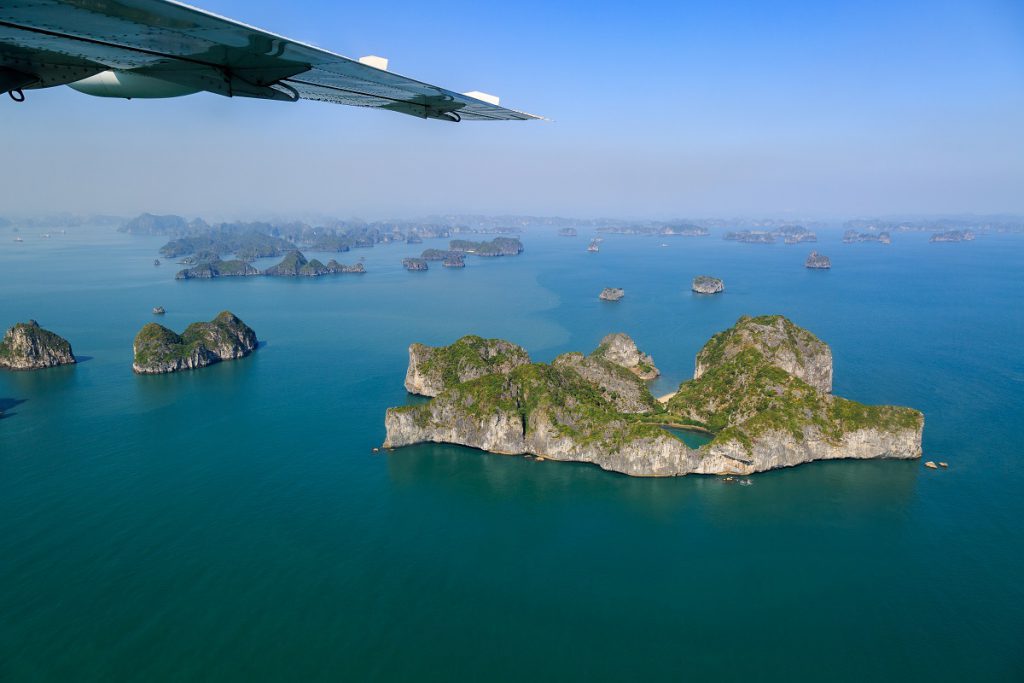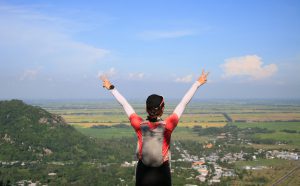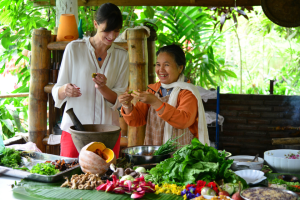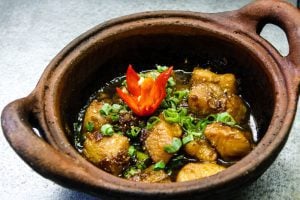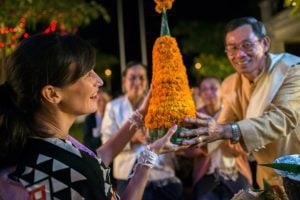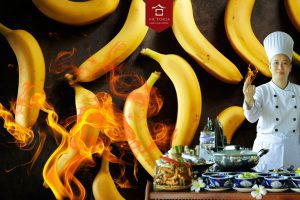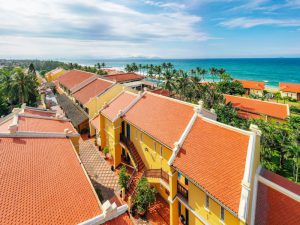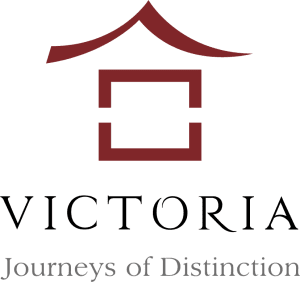As a travel destination, Vietnam is booming, welcoming a record-breaking 13 million international visitors in 2017. Best known for its lushly forested mountains, vibrant cities, amazing street food scene and sweeping beaches (with more than 3,400 km of coastline, most of it undeveloped), the question isn’t whether to put Vietnam on your travel “bucket list” but how to best arrange your trip.
Shaped like an “S”, Vietnam is geographically divided into three regions: North, Central, and South. Luckily, all three regions speak the same language (although with regional accents, much like the US with accents ranging from laid-back California to Southern drawl to the distinctive dialect of New York City), and there’s certainly enough to do in each region to spend a week or more.
To help you decide on what to see and do, here are some of our recommended Vietnam itineraries showcasing the best places to see in Vietnam.
Northern Vietnam
Northern Vietnam is all about spectacular views. In the far north of the country bordering China, you’ll find colorful hill tribe villages set amongst terraced rice fields cascading down the mountainsides. The capital of Hanoi is backed by 1,000 years of history as seen through its Old Quarter where streets are still named after the crafts and guilds that served the imperial court. Or head out of the city and go east to Halong Bay, a UNESCO-listed Heritage Site highlighted by thousands of karst islands rising from emerald waters.
To cover Northern Vietnam in 5 days, we suggest heading first to the former French hill station of Sapa. Located in the Lien Hoang Son mountain range, Sapa was popular among French colonists in the early 20th century for its cool temperatures and fresh, clean, mountain air.
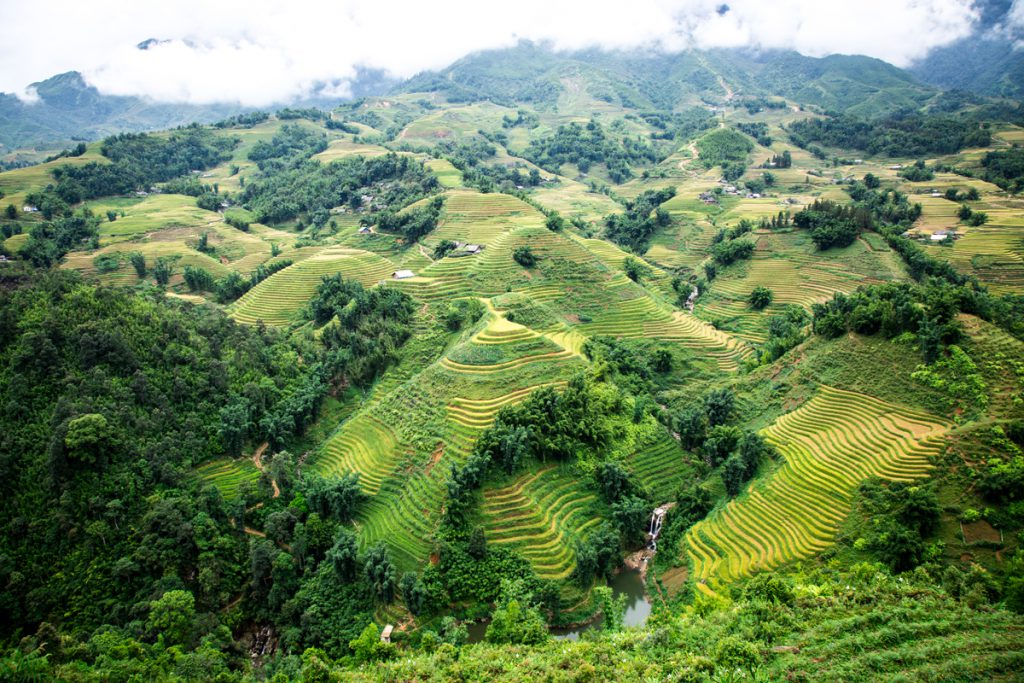
Located 380 km northwest of Hanoi, you can either get to Sapa by road or train. If possible, the overnight train is a great option, as you can get a full night’s sleep before pulling into Lao Cai (the gateway to Sapa, just on the border with China) at dawn.
Enjoy a hearty breakfast and make your way up the mountain to Sapa. While the town itself is picturesque, the magic of Sapa is really best experienced by trekking the surrounding hillsides and interacting with the various ethnic minority groups.
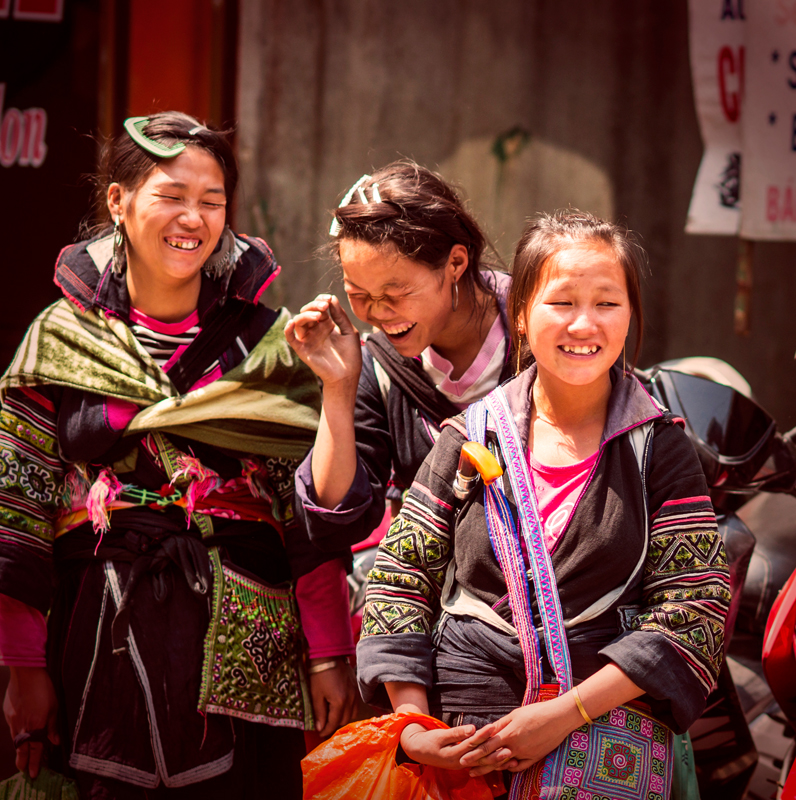
The next day, rest up from all the trekking with a spa treatment (the hot footbaths and soaks in traditional herbal medicine are especially popular) and explore the town with its quaint boutiques and charming little eateries. The hill tribe women and children are especially friendly and speak great English, so perhaps buy a trinket or two and find out about life in Sapa.
From the mountains, it’s time to head to the coast, to magical Halong Bay. Meaning “Descending Dragon” in Vietnamese, the more than 1,900 islands look like the undulating body of a dragon, especially from the air. To see this stunning spectacle, book a scenic seaplane flight for a totally different perspective of this UNESCO World Heritage Site (and experience thrilling water takeoffs and landings).
Then, experience the islands from eye level with an overnight cruise, with shore excursions visiting spectacular caves, a fascinating pearl farm, and one of the sandy islands for great viewpoints or a dip in the calm waters.
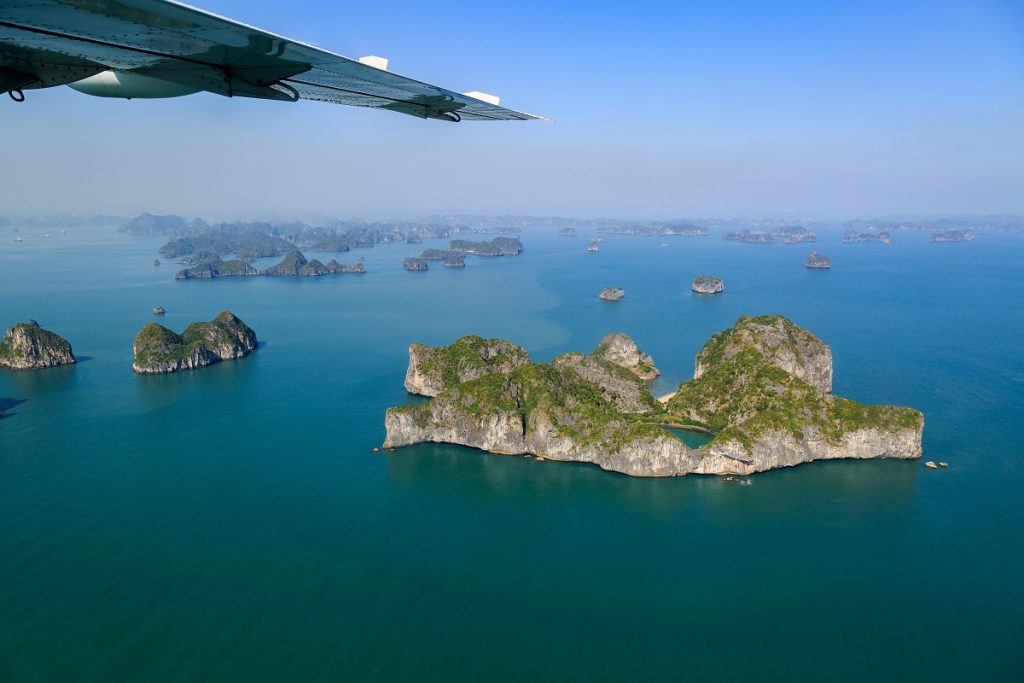
Arrive back in Hanoi in the late afternoon, just in time for a stroll through the Old Quarter, with narrow streets named after 36 guilds from ancient times. See the impressive 19th century St. Joseph’s Cathedral all lit up, and join the locals in a walk around Hoan Kiem Lake. Soak up the vibrant atmosphere with tons of food sellers and street performers to provide the entertainment.
To extend your time in Northern Vietnam, head west to the Mai Chau Valley, home to the White Thai people, and walk or cycle along gorgeous fields of rice, and past stilt houses. Mai Chau has also developed a reputation for adventure sports, including kayaking, rock climbing, and mountain biking.
Ninh Binh, south of Hanoi, is also a nature lover’s dream where boat trips are easily arranged cruising past the karst landscapes of Tam Coc, also known as “Halong Bay on Land”, and the UNESCO World Heritage Trang An Grottoes.
See more travel ideas in our Ultimate Northern Vietnam itinerary here.
Central Vietnam
Central Vietnam includes the hot spots of Hue, Danang, Hoi An and My Son, a beautiful mix of culture, history, and fantastic beaches. History buffs will enjoy exploring the Imperial Citadel of Hue with its royal tombs and graceful temples, including the famed Perfume Pagoda, as well as the military sites of the Demilitarized Zone. Outside of Hoi An, the ancient ruins of My Son make for a great day trip.
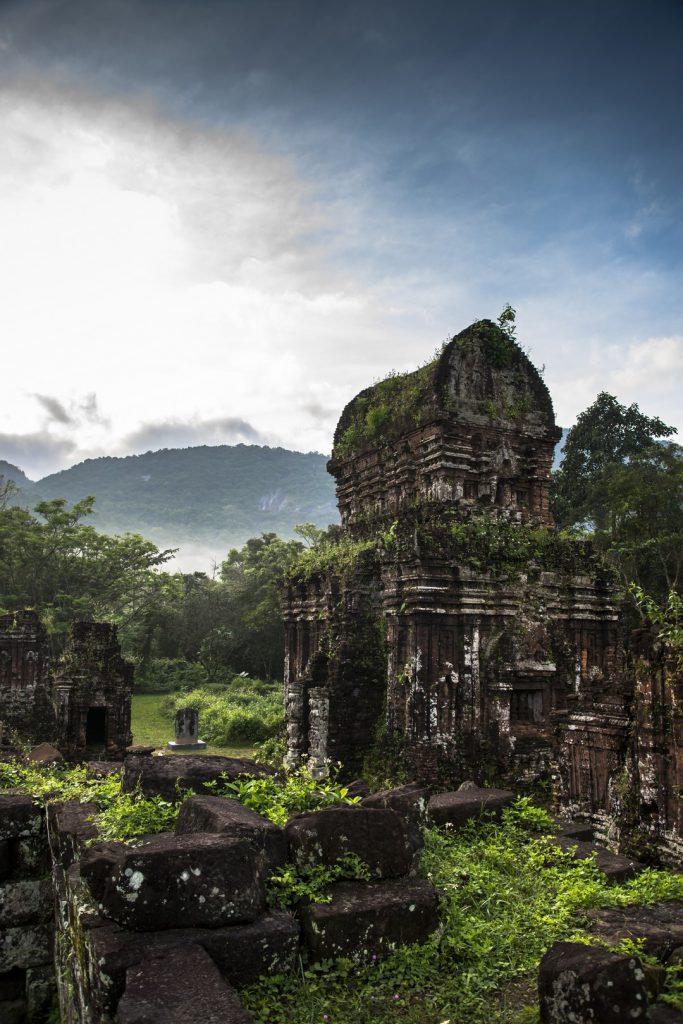
Beach lovers will gravitate towards Danang with its long stretch of beach and good seafood eats, as well as Hoi An, with quiet, palm tree-lined beaches just a 15-minute drive from the center of the ancient port town.
Hoi An is also known for its great shopping. With literally hundreds of tailor shops able to re-create your favorite garment in a day or two, set aside some time to get custom-tailored clothing. While your garments (or leather bags and shoes) are getting made, you can laze on the beach, take a boat cruise down the Thu Bon River to visit the single-craft villages making exquisite pottery or woodwork, or explore the surrounding countryside.
There’s even an option to tour in a vintage sidecar, leaving the driving up to a guide while you snap away pictures of lush, green rice fields, ponds stocked with fish, or water buffalo lazily grazing by the roadside.
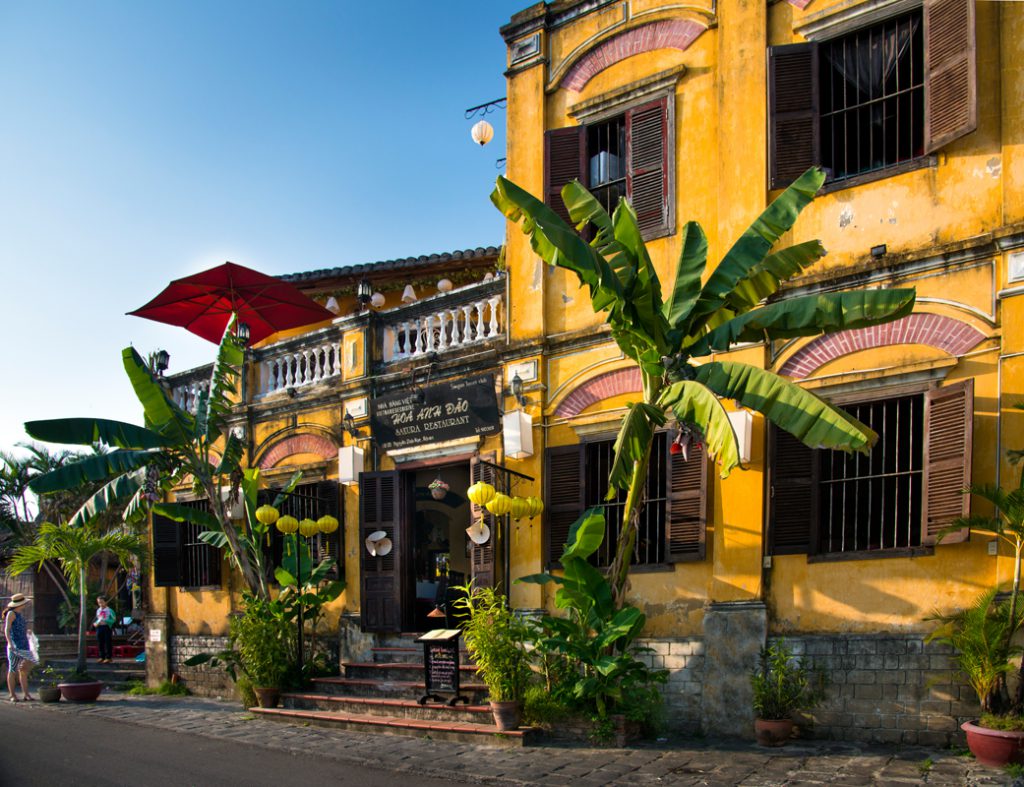
Other popular South Vietnam beaches along the Central and South-Central coast include Nha Trang (featuring a great city beach and cheap island snorkeling tours), and Phan Thiet, a sleepy fishing village just four hours by car from Ho Chi Minh City. Or for a more cultured break, spend a few days in the hills of Dalat, once a wellness resort town favored by French colonists. The pine forests, cool temperatures, and fields of flowers will have you wondering whether you’ve been magically transported to Europe.
Visit Central Vietnam on Victoria Voyages’ 10 Day / 9 Night Elite Vietnam itinerary or the 14 Day / 13 Night Ultimate Vietnam Experience.
Southern Vietnam
Southern Vietnam is highlighted by the country’s biggest city, Ho Chi Minh City (also known as “Saigon”). Vibrant, chaotic, and electrifying, Ho Chi Minh City is the modern face of Vietnam with glitzy malls, skyscrapers (including the recently constructed Landmark 81, the 14th tallest building in the world), and a world-renowned dining scene ranging from haute cuisine restaurants opened by Michelin-starred chefs to humble streetside carts serving up delicious one-plate meals for less than a dollar.
However, there are still charming throwbacks to its past when it was known as the “Pearl of the Far East”, seen through its tree-lined boulevards, pale yellow colonial-era buildings and graceful architecture fusing European and Asian design elements.
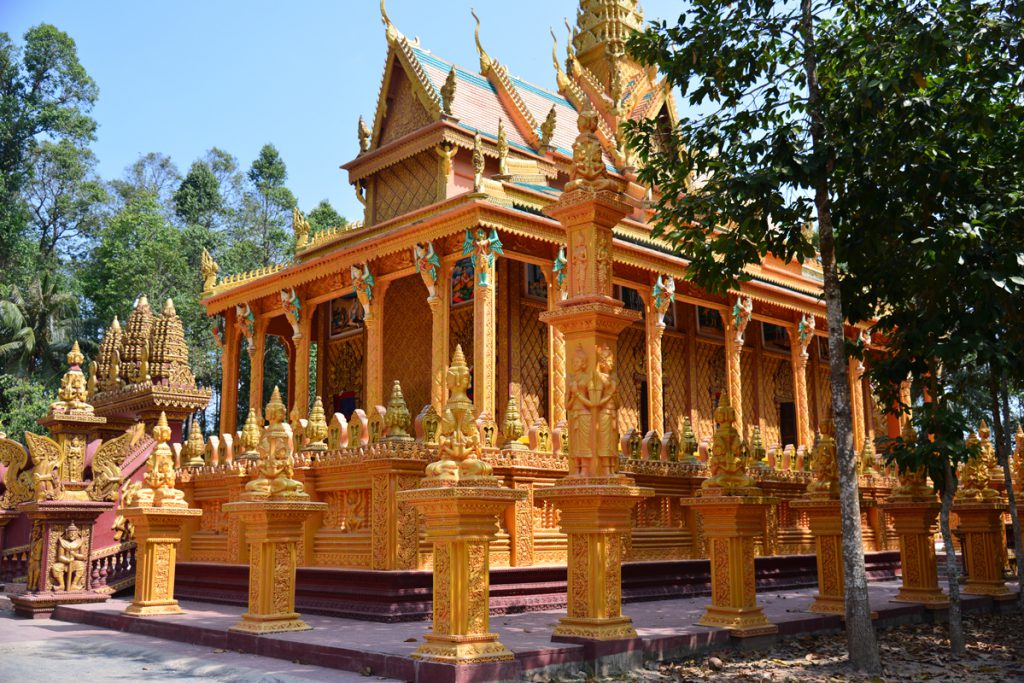
After getting your fill of Saigon’s ancient temples, excellent restaurant scene, and fascinating museums, head deeper south into the Mekong Delta. Known as Vietnam’s “Rice Bowl” for its endless swaths of rice paddies fed by countless waterways, the Mekong Delta is likely what visitors picture when they think of Vietnam. Just off the main roads, you can still find village markets, thatched-roofed huts, and ethnic Khmer, Chinese and Cham temples and pagodas.
One of the best ways to explore the Mekong Delta is by boat, cruising its narrow waterways and watching life unfold along its banks. The largest city in the Mekong Delta is Can Tho, set right on the Hau River, a tributary of the Mekong River. Can Tho is also home to the Cai Rang Floating Market, the largest in the Mekong Delta, where smaller boats navigate among the barges laden down with fresh produce from the region.
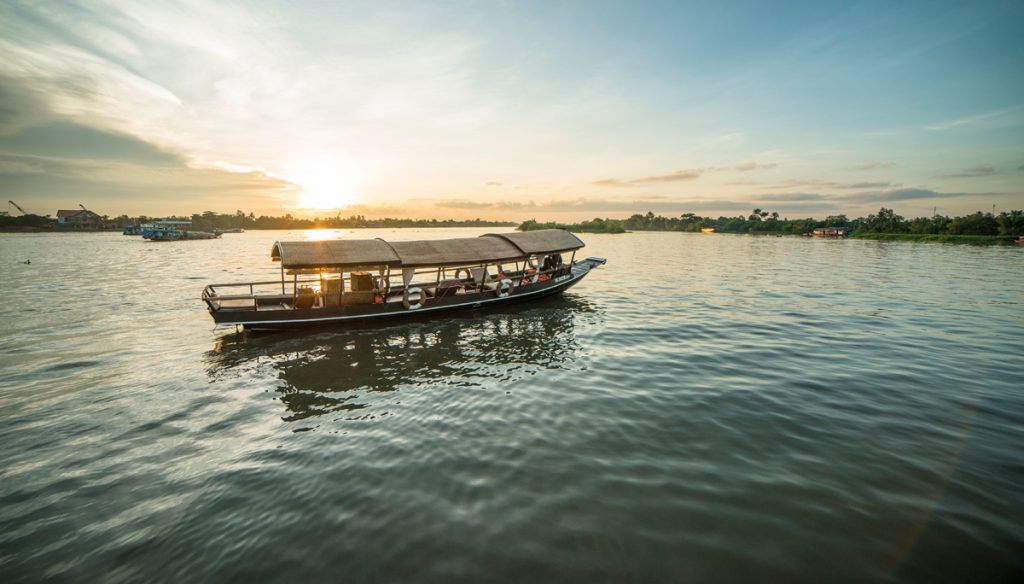
Another highlight of the Mekong Delta is the town of Chau Doc. Set on the border with Cambodia, Chau Doc is a delightful mix of various cultures: Khmer (ethnic Cambodian), Chinese, Vietnamese, and Cham.
Nature lovers will want to make a day trip out to visit the Tra Su Forest, an eco-reserve known for its cajuput trees and large bird population. One of the highlights of Tra Su is being rowed through the mangroves over thick carpets of water plants as birds and bats fly overhead.
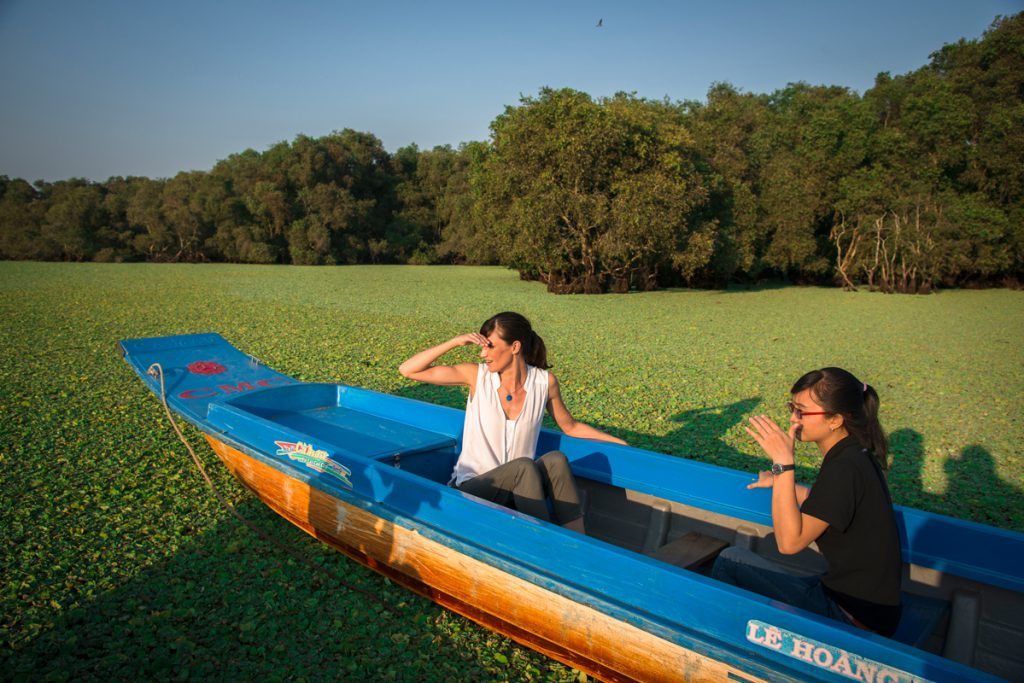
The southern end of the Mekong Delta is also the gateway to beautiful Phu Quoc Island. Roughly the size of Singapore, Phu Quoc is an up-and-coming gem, known for its powdery soft beaches, azure waters, and laid-back atmosphere. Ferries are available from Rach Gia or Ha Tien on the Vietnamese mainland.
For more destination tips to Southern Vietnam, see our 4 Day / 3 Night Ultimate Mekong Delta itinerary.
